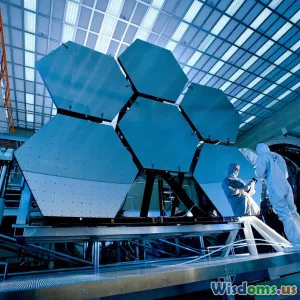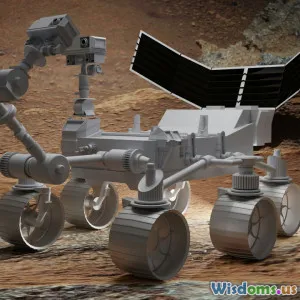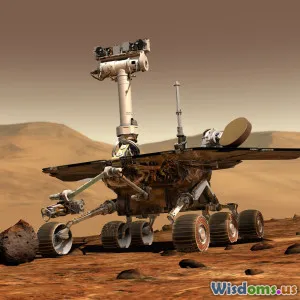
Will Humans Ever Live on Other Planets Realistic Challenges
9 min read Explore the real-world challenges humanity faces in living on other planets and what it takes to make interplanetary life possible. (0 Reviews)
Will Humans Ever Live on Other Planets? Realistic Challenges
Humanity’s dream of establishing colonies beyond Earth has captivated imaginations for centuries, from science fiction novels to ambitious plans by space agencies today. But transforming those dreams into reality is fraught with complex hurdles. Could humans truly live on Mars, the Moon, or even more distant worlds? This article examines the scientific, technological, biological, and ethical challenges facing interplanetary colonization and what it might realistically take to turn our multi-planetary aspirations into tangible existence.
The Deep-Seated Human Desire to Explore
The notion of living on other planets is not merely fantasy—it is closely tied to survival, curiosity, and advancement. The famed physicist Stephen Hawking warned about Earth's vulnerability: natural disasters, asteroid impacts, and human-made catastrophes highlight the imperative of becoming a multi-planet species. Establishing space colonies could act as a “backup” for humanity.
But do hopes align with capability? The hope destined in Mars missions, NASA’s Artemis lunar program, and private ventures like SpaceX’s Starship outline captivating pathways. However, they each unravel layers of complexity when scrutinized beyond headlines.
Technological and Engineering Challenges
Reaching Other Worlds: The Transportation Dilemma
Getting to other planets is the first colossal hurdle. Even Mars, our closest neighbor, is approximately 54.6 million kilometers away at its nearest approach. Current propulsion systems, like chemical rockets, require months (6 to 8 months minimum) to travel this distance.
Prolonged travel raises issues of fuel efficiency, weight constraints, and crew safety. Concepts like nuclear thermal propulsion and ion drives promise faster, more efficient trips but remain largely experimental or in developmental phases with daunting engineering obstacles.
Example: NASA’s proposed Space Launch System (SLS) aims to carry heavy payloads to the Moon and Mars but has faced delays and budget overruns, highlighting how cutting-edge technology requires time and investment.
Habitat Construction and Sustainability
Living on another planet demands habitats capable of shielding humans from harsh environments. Mars, for instance, has an average surface temperature around -80°F (-60°C), almost no breathable atmosphere, and significantly elevated radiation levels due to a thin atmosphere and lack of an intrinsic magnetic field.
Creating self-sustaining habitats entails advanced life-support systems that provide air, water, food, and waste recycling, with robust shielding against cosmic rays. Ideas such as underground bases, inflatable habitats with regolith (planet dust) shielding, and even 3D-printing habitats using local materials are under investigation.
Energy Production
On Earth, we rely heavily on fossil fuels and a mix of nuclear and renewable energy. On other planets, energy generation options are limited by environment and scale. Solar power on Mars generates less energy due to its greater distance from the Sun—about 43% less sunlight compared to Earth.
Alternatives like nuclear power (radioisotope thermoelectric generators or compact reactors) might be necessary. However, launching nuclear materials safely, managing reactor technologies remotely, and integrating them into habitat systems represent additional challenges.
Biological and Medical Obstacles
The Effects of Microgravity and Low Gravity
Prolonged weightlessness adversely affects bone density, muscle mass, and cardiovascular health. Astronauts aboard the International Space Station (ISS) mitigate these effects through daily intensive exercise but are not exposed to the reduced gravity environments of other planets.
Mars’ gravity is about 38% of Earth’s. We lack comprehensive studies on long-term living in such gravity. Will human physiology adapt, or will inhabitants face debilitating health effects?
Radiation Exposure: The Silent Peril
Earth’s magnetic field and atmosphere shield us from cosmic and solar radiation—a protection mostly absent on the Moon and Mars. Chronic exposure increases risks for cancers, degenerative diseases, and genetic damage.
The average radiation dose on the ISS is roughly 100 times Earth’s background level. Estimates suggest staying on Mars's surface could expose humans to annual doses nearing or exceeding NASA’s career limits for astronauts.
Psychological Factors and Social Dynamics
Isolation, confinement, communication delays (up to 24 minutes one-way with Mars), and living in sterile, artificial environments strain mental health.
Past analog studies—such as the HI-SEAS simulations in Hawaii or the Mars500 experiment—show how crew cohesion, psychological stability, and conflict management will be vital for these missions to succeed long-term.
Environmental and Ethical Considerations
Terraforming and Planetary Protection
Permanent colonization suggests modifying the environment to support human life more easily. Terraforming Mars, for example, involves thickening the atmosphere, raising temperatures, and possibly introducing Earth-like biology.
Such efforts may take centuries or longer and pose ethical questions regarding contamination of potential indigenous microbial life, as warned by planetary protection protocols established by space agencies.
Resource Utilization and Sustainability
Relying on Earth resupply missions makes colonies fragile. Utilizing in-situ resources—like Martian water ice for drinking and fuel production or lunar regolith minerals—is essential.
However, mining and exploiting alien environments must be balanced with preserving them for science and respecting potential extraterrestrial ecosystems.
The Economic and Political Dimensions
Funding and International Cooperation
Space colonization requires multibillion-dollar investments, often exceeding the budgets of even wealthy countries. Public and private partnerships, such as NASA collaborating with SpaceX, are promising but introduce new dynamics in ownership, liability, and governance.
Without international regulation and cooperation, conflicts over territorial claims, resource rights, and technological dissemination could emerge.
Returning Value and Incentives
The question remains: what economic or scientific returns justify the astronomical costs?
Space mining of rare elements, advancements in technology, and securing humanity’s future are cited motives, but concrete profit models are still largely speculative.
Conclusion: Are We Ready for Multi-Planetary Life?
The challenges to human settlement on other planets are profound and multifaceted—spanning technology, biology, psychology, ethics, and politics. Yet incremental progress is undeniable. The Artemis program aims to establish a sustainable lunar base in the 2020s, and Mars missions, while still decades away, are actively planned with serious study and investment.
Realistically, a few pioneers living in small, carefully controlled habitats distant from Earth might be possible within this century. However, large-scale, self-sufficient human colonies require breakthroughs in propulsion, habitat engineering, medical science, and political will.
Ultimately, the dream of living on other planets compels us to deepen our understanding, innovate relentlessly, and approach the cosmos thoughtfully. Though the journey will be neither quick nor easy, our species’ survival and curiosity make it a compelling pursuit with unimaginable rewards.
References:
- NASA Human Research Program, Effects of Long-Duration Spaceflight on the Human Body.
- SpaceX Blog and Elon Musk’s Mars Colonization Plans.
- National Academies of Sciences, Engineering, and Medicine: Pathways to Exploration.
- HI-SEAS Mission Reports, University of Hawaii.
- NASA's Artemis Program official documentation.
By embracing the cosmos cautiously and creatively, the future of humanity beyond Earth awaits.
Rate the Post
User Reviews
Popular Posts





















